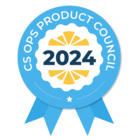Hello,
We have a metric that uses Strategic Engagement timeline entries to log strategic conversations with our customers, and we need to report on those activities.
Currently we’ve had to build a rather extensive data design in order to capture this information because every place one of these is logged (CTA, Scorecard, Relationship, Success Plan) generates a different ID, and if it is added as an associated record it doesn’t generate a standard ID and therefore not trackable within the timeline activities object, requiring us to use the Associated Records object and then pull in all locations.
As it stands, every time a new place to log a timeline activity is added in Gainsight we have to rebuild this data design to incorporate the new type of timeline activity, which is not sustainable. This process makes it very challenging to create accurate reports and even harder to investigate. Curious if this is something other people are running into? Or if this functionality is actually working properly? Is there something that can be done to streamline this process for reporting moving forward?









